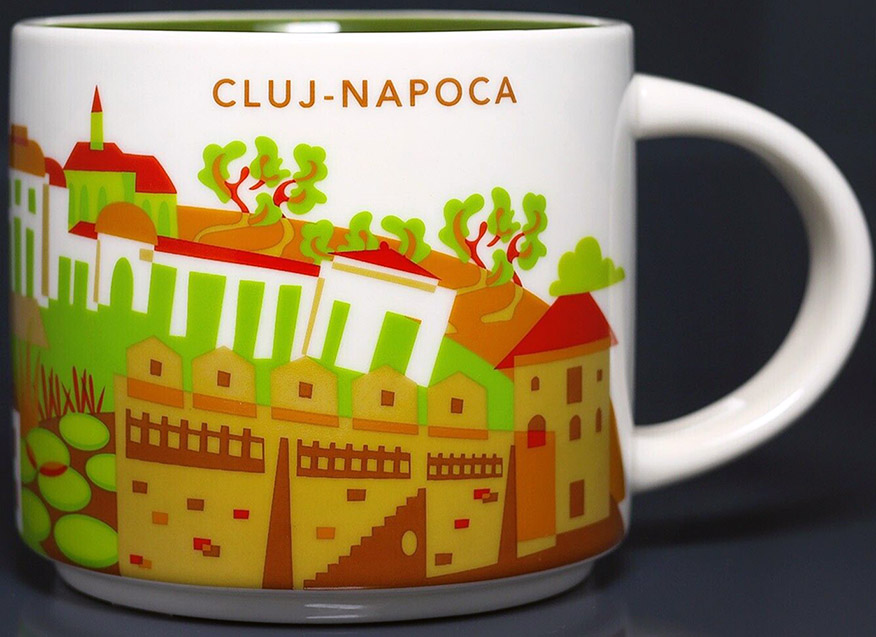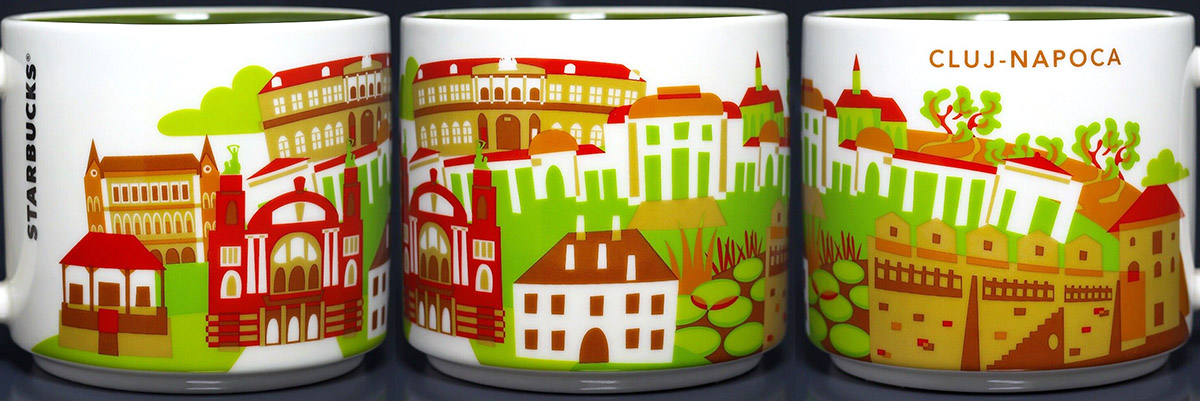
You Are Here – Cluj-Napoca
Starbucks You Are Here – Cluj-Napoca is a mug for a Romanian city nestled in the heart of Transylvania. Cluj-Napoca is a vibrant city that seamlessly blends its rich history with a modern and dynamic spirit. As the unofficial capital of the region, the city has evolved over centuries, leaving behind a tapestry of historical landmarks, cultural treasures, and enduring symbols.
Cluj-Napoca, known as Napoca in Roman times, was founded in 106 AD. The city played a crucial role in the Dacian-Roman wars. Its strategic location contributed to its growth, becoming an important cultural and economic center during the Middle Ages. Over the years, Cluj-Napoca has been influenced by various civilizations, including the Hungarian, Saxon, and Ottoman, shaping its unique identity.
It is worth mentioning that “Cluj” is derived from the Latin “Clusium,” a reference to the ancient Roman colony, while “Napoca” was added in the 1970s to honor the city’s Roman past. This amalgamation not only encapsulates the city’s rich history but also symbolizes the continuity of its cultural heritage.
The design of the mug showcases the skyline of the city and numerous historical buildings. Here are some points of interest worth visiting:
– St. Michael’s Church: This Gothic masterpiece, dating back to the 14th century, stands as one of the most iconic landmarks in Cluj-Napoca. Its stunning architecture and intricate details make it a must-visit for history and art enthusiasts.
– Central Park (Parcul Central): A green oasis in the heart of the city, Central Park provides a peaceful retreat. Boasting a lake, a casino, and a Japanese garden, the park is a favorite among locals and visitors alike.
– Cluj-Napoca Botanical Garden: Founded in 1872, the botanical garden is a haven of biodiversity, featuring over 10,000 plant species. It serves as both a scientific and recreational space, offering a tranquil escape within the city.
– Banffy Palace: A symbol of the city’s aristocratic past, Banffy Palace is an architectural gem that now houses the National Art Museum. The palace showcases an impressive collection of Romanian and European art.
– Tailors’ Bastion (Bastionul Croitorilor): Built in the 15th century, this medieval bastion served as a defensive structure. Today, it stands as a historical monument, offering panoramic views of the city.





































































